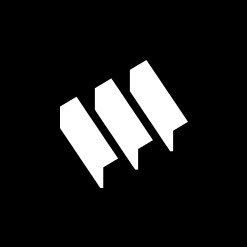How to Merge IoT and Blockless IOTA Technology

Are you looking to enhance the capabilities of your IoT devices by incorporating cutting-edge technology? The convergence of Internet of Things (IoT) and Blockless IOTA technology presents a unique opportunity to revolutionize the way connected devices communicate and transact. In this comprehensive guide, we will explore the steps and best practices for merging IoT and IOTA technology seamlessly.
Understanding IoT and IOTA Technology
Before we delve into the process of merging IoT and Blockless IOTA technology, it is essential to have a clear understanding of these two concepts. IoT refers to the network of interconnected devices that can communicate and exchange data without human intervention. On the other hand, IOTA is a revolutionary distributed ledger technology that does not rely on traditional blockchain, making it lightweight and scalable.
Benefits of Integrating IoT with IOTA Technology
The fusion of IoT and IOTA technology offers a myriad of benefits for businesses and consumers alike. By leveraging the feeless and scalable nature of IOTA, IoT devices can securely transact with each other in real-time without incurring high transaction costs. Moreover, the tamper-proof architecture of IOTA ensures the integrity and authenticity of data exchanged between IoT devices, enhancing trust and security.
Steps to Merge IoT and Blockless IOTA Technology
Now that we have grasped the fundamentals, let's dive into the steps to seamlessly merge IoT and Blockless IOTA technology:
-
Identify Use Cases: Begin by identifying use cases where IoT devices can leverage the capabilities of IOTA technology, such as supply chain management, smart cities, and IoT-enabled payments.
-
Integrate IOTA Nodes: Set up IOTA nodes to enable communication between IoT devices and the Tangle, IOTA's directed acyclic graph (DAG) ledger. This step is crucial for facilitating secure and scalable transactions.
-
Develop Smart Contracts: Utilize IOTA Smart Contracts to automate transactions and agreements between IoT devices. These self-executing contracts ensure transparency and efficiency in data exchange.
-
Implement Masked Authenticated Messaging (MAM): Enhance data privacy and security by implementing MAM, a feature of IOTA that enables encrypted messaging between IoT devices.
-
Test and Validate: Thoroughly test the integration of IoT and IOTA technology to ensure seamless interoperability and data integrity. Conduct beta testing to identify and resolve any potential issues.
Best Practices for Merging IoT and IOTA Technology
In addition to following the steps outlined above, consider the following best practices to optimize the integration of IoT and IOTA technology:
- Scalability: Ensure that your infrastructure can accommodate the growing number of IoT devices connected to the IOTA Tangle.
- Data Security: Implement robust encryption protocols to safeguard sensitive data transmitted between IoT devices.
- Compliance: Adhere to regulatory requirements and industry standards to maintain the legality and integrity of transactions.
The convergence of IoT and Blockless IOTA technology holds immense potential for transforming the way devices interact and transact in the digital age. By following the steps and best practices outlined in this guide, businesses can unlock new opportunities for innovation and efficiency. Embrace the future of interconnected devices with the power of IOTA technology!
Are you ready to merge IoT and IOTA technology to unlock new possibilities? Get started today and revolutionize the way your IoT devices operate.
Want to get cryptocurrency instantly?
Related articles
Latest articles
See more





















